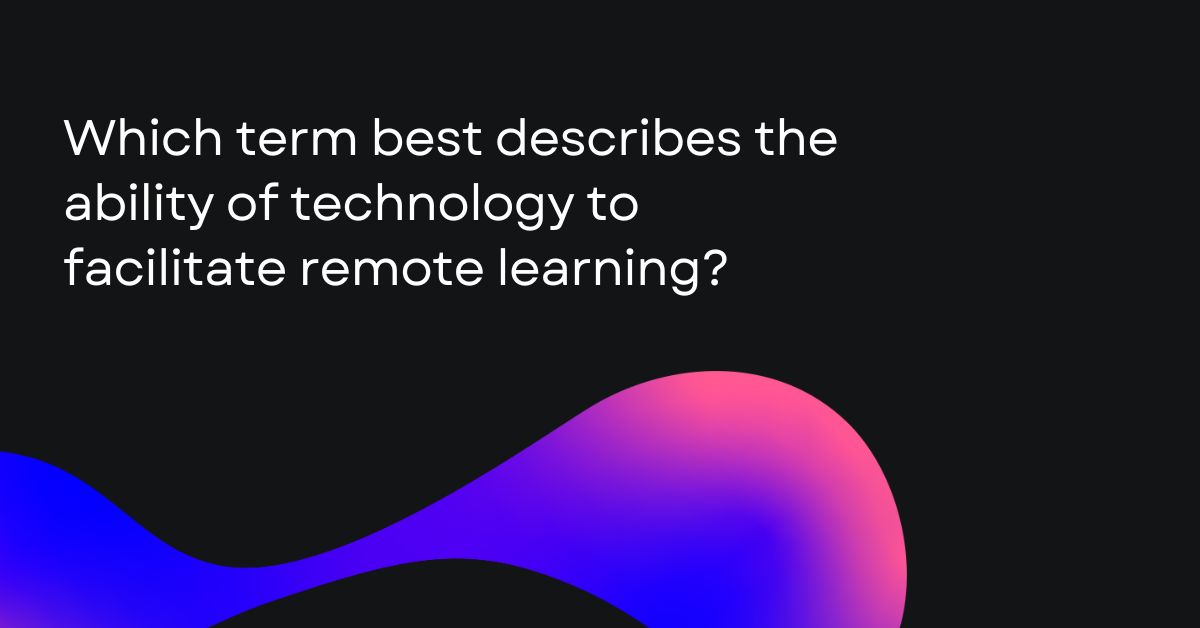a) Confinement
b) Restraint
c) Accessibility
d) Isolation
Ans: c) Accessibility
This answer best describes how technology helps learners in overcoming distance, time, or physical barriers, and access education at remote places.
We’ve provided a detailed explanation for this answer below.
Explanation:
With it’s expansion in almost every sector, technology has become the backbone of modern education. With virtual classrooms, digital resources, and online platforms, the world has witnessed a rapid transformation in how knowledge is produced and consumed.
But the most important factor in this era of remote learning is Accessibility.
Among all the options given, this one stands out because it perfectly captures the power of technology to make remote learning possible. If a learner gets the right tools and systems, he or she can access educational content from anywhere around the world. Hence, Accessibility is the best term that bridges the gap between technology and remote learning.
Importance Of Accessibility In Remote Learning
In the context of remote learning, accessibility usually means being able to reach educational opportunities and extract their benefits using technology. It covers following areas:
- Physical access: Learners should have physical devices such as smartphones, desktops, etc. with internet connectivity.
- Flexibility: Ensuring that students can access content at any time of the day, as per their convenience.
- Inclusive Access: Involves production of educational content that can be accessed by students with special needs.
- Ease of access: Content designed should be understandable by all and should be user-friendly.
Why Other Options Ruled Out?
You might be wondering how other options were not describing the ability of technology to support remote learning. Here, we break down the reason behind each option:
- Confinement: This term suggests being trapped. Through technology, remote education is not trapping learners. Rather, it is providing them freedom to access educational content of their choice at their convenience.
- Restraint: One of the imperative functions of the technology in the field of remote learning is to expand and enable the possibilities. This term suggests quite the opposite of this and implies that technology is a means to restrict remote learning.
- Isolation: The concept of remote learning is designed to reach learners across all geographic locations, and connect them with teachers through virtual mode. This option suggests that it is designed to isolate learners, which is a wrong interpretation.
Challenges Faced By Accessibility
While accessibility is the term that makes integration of technology possible into the concept of remote learning, there are still a few areas where improvement is needed:
- Digital Divide: Not all the students have access to digital devices or the internet. This poses a huge challenge as both things are required for a successful remote learning experience. Moreover, even if pre-recorded educational content is being provided, the need for digital devices to access it still remains.
- Affordability: Currently, the remote learning infrastructure is costly as it requires a device, internet connection, and subscriptions. These costs may occur too high to some families and they might not be able to incur these. Technology should advance in the direction where remote learning can be made affordable.
- Inclusive design gaps: Although things like audio description, closed captions, etc. are present to include learners with special abilities into the remote learning framework, many platforms have still not integrated these features into their educational content. Integration of such features should be promoted to address the needs of those learners who are differently abled.
